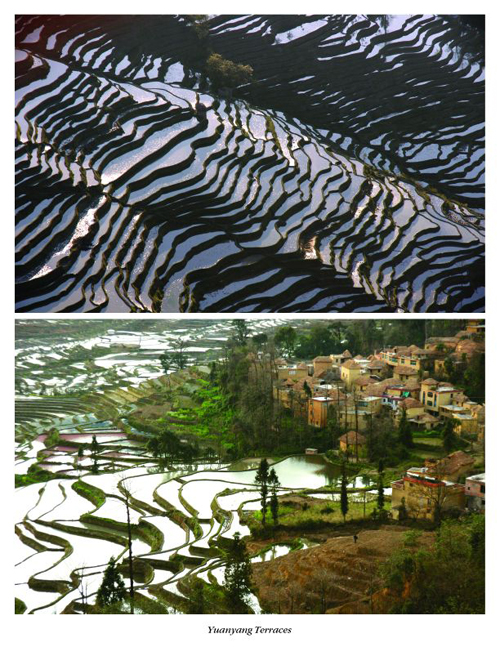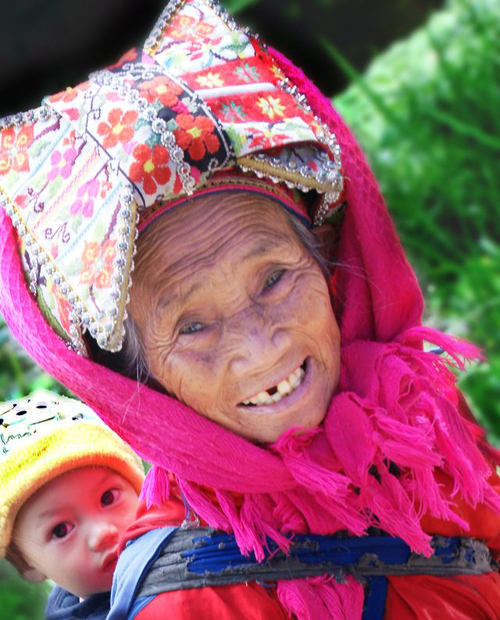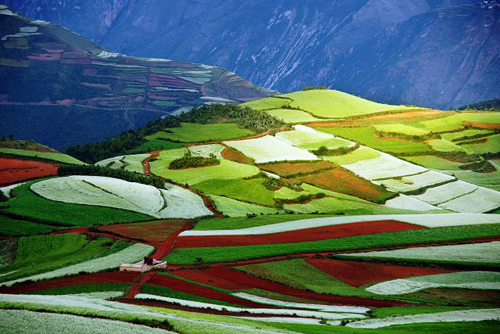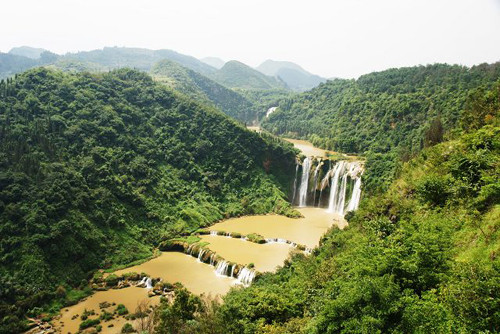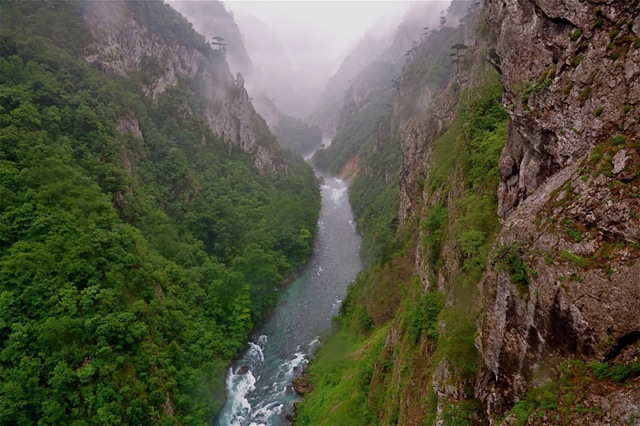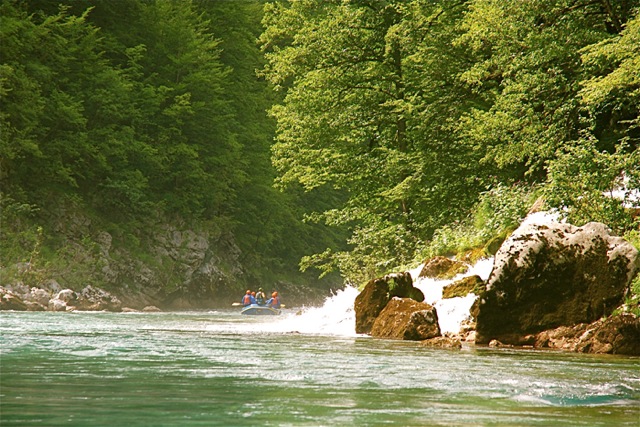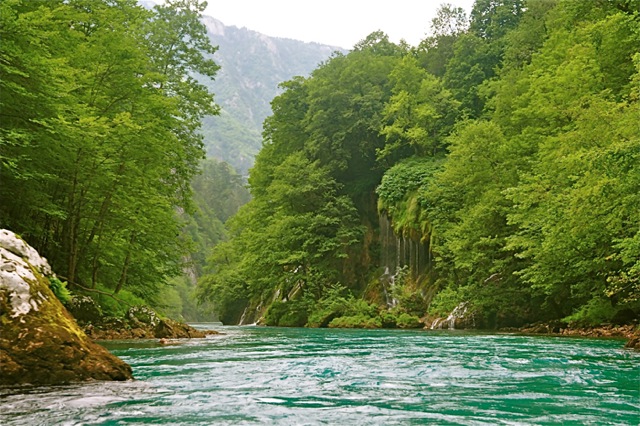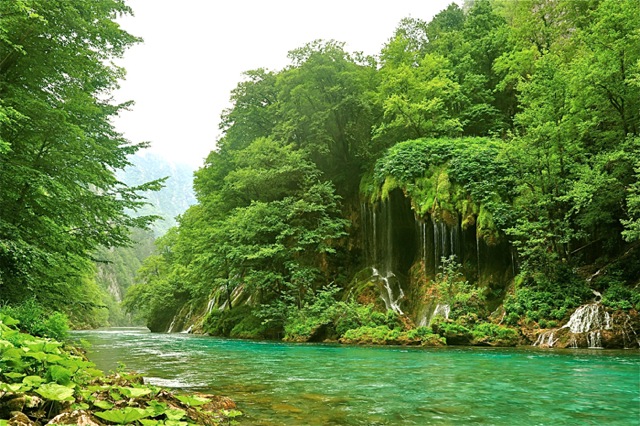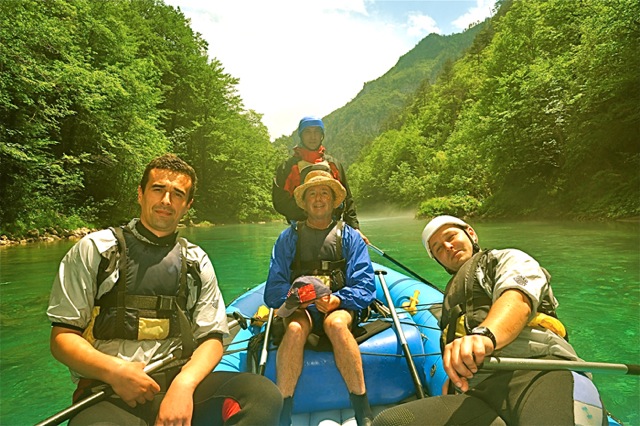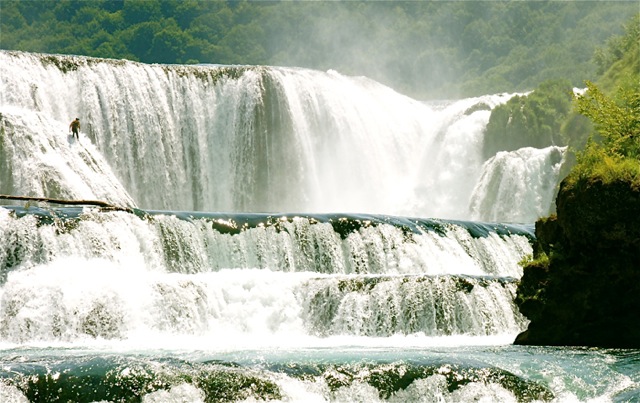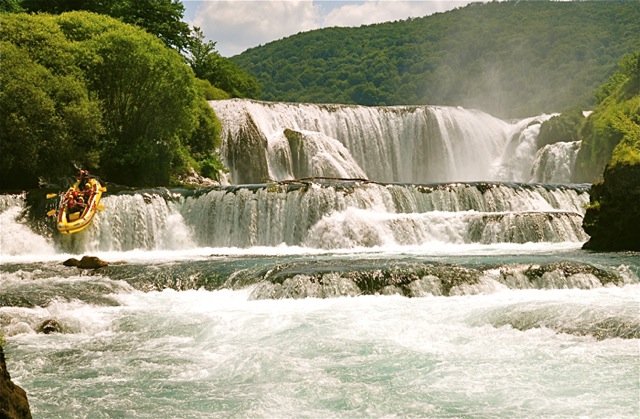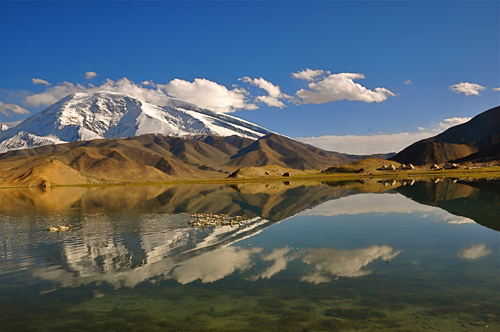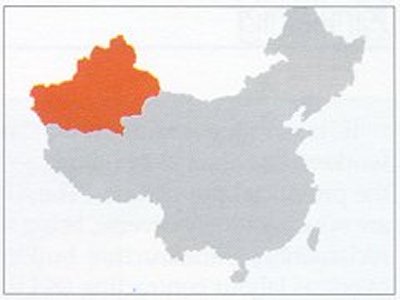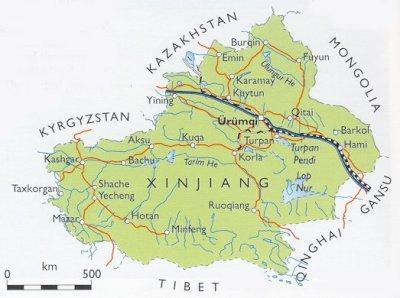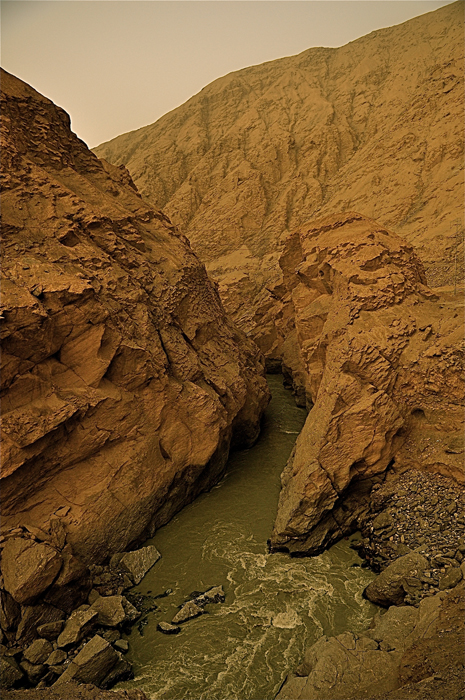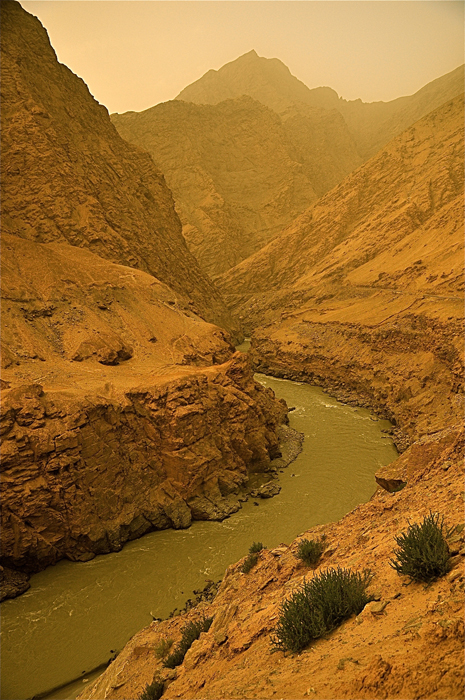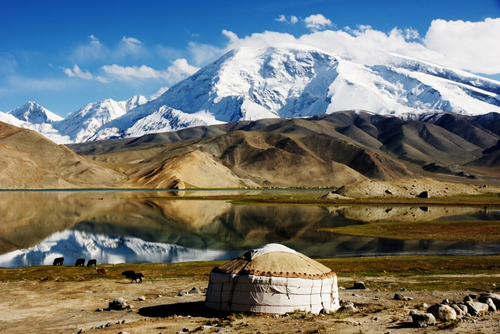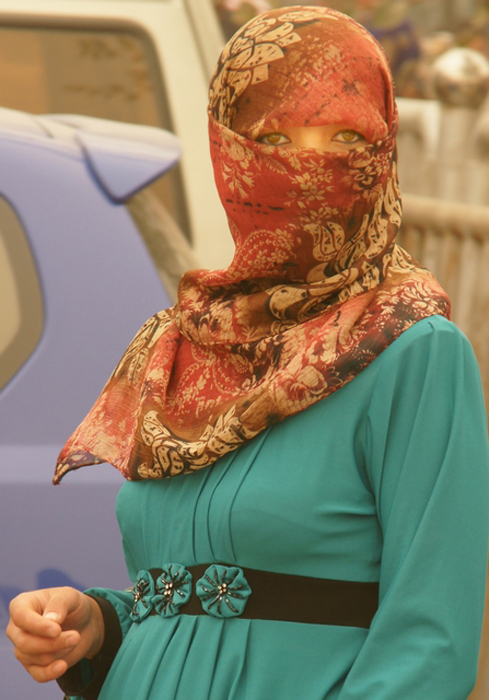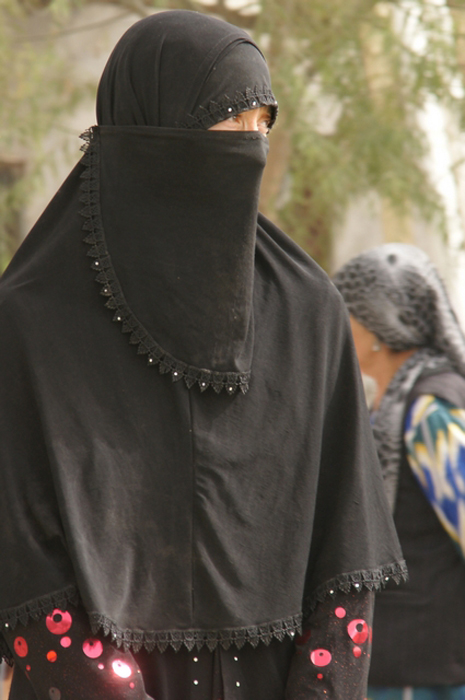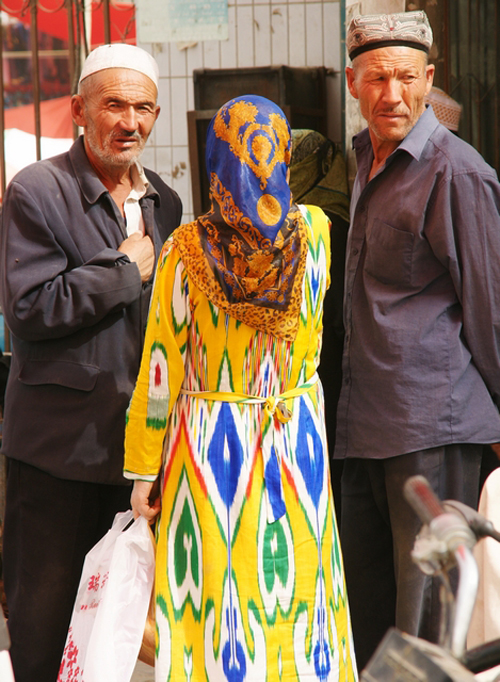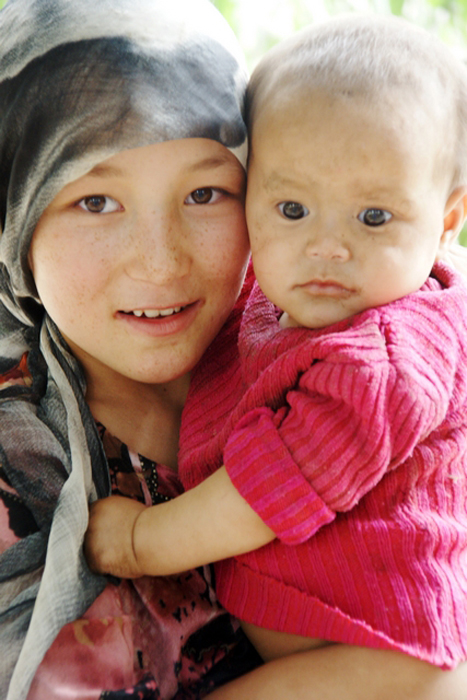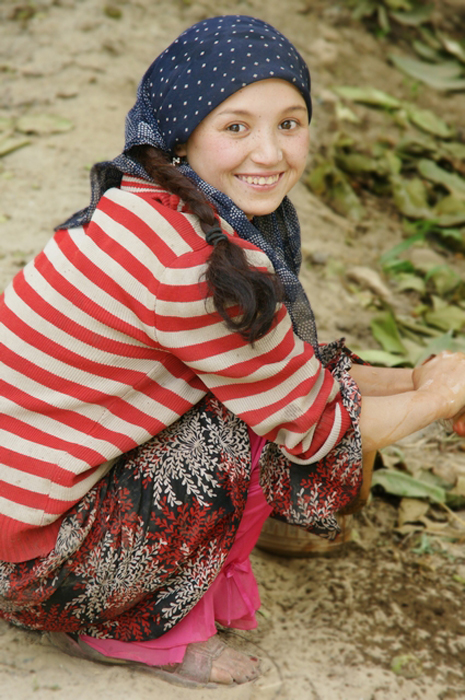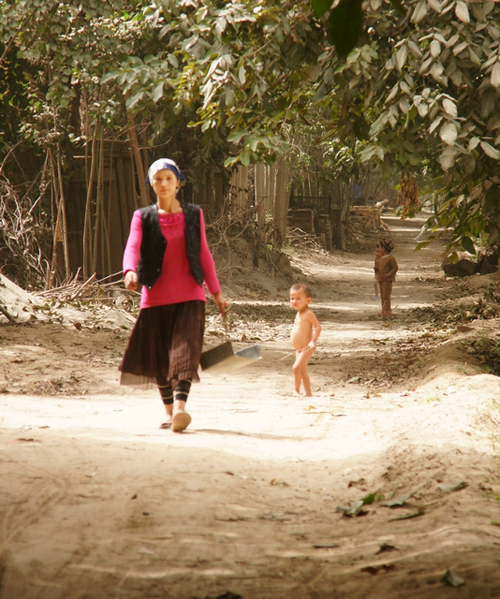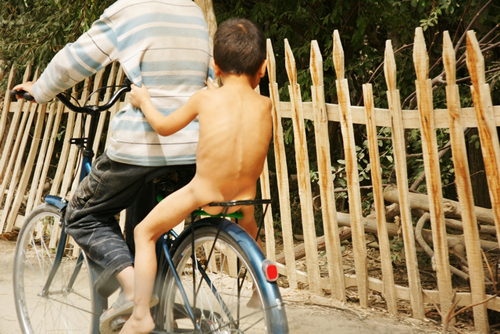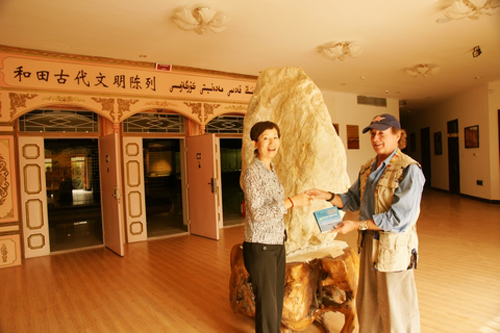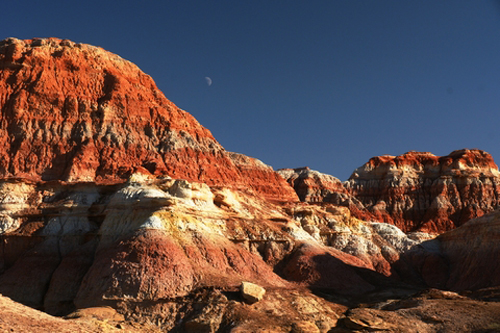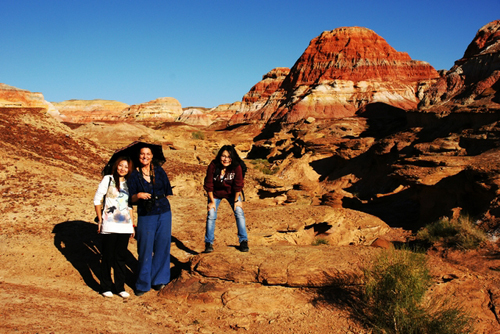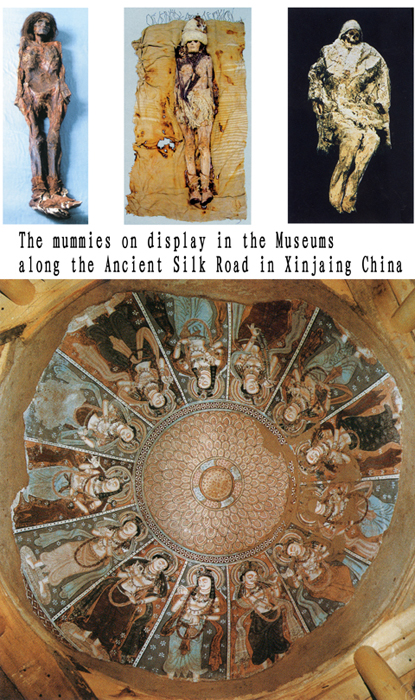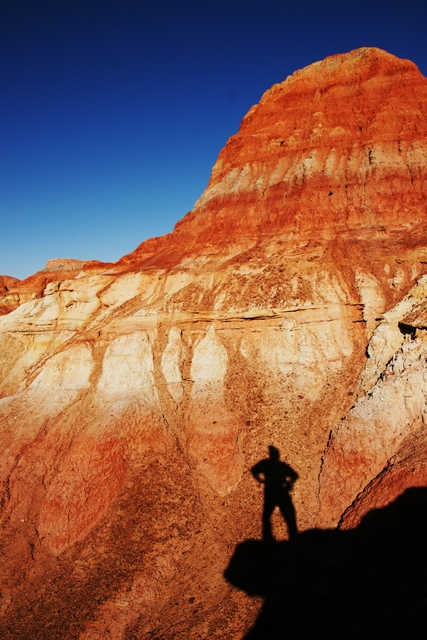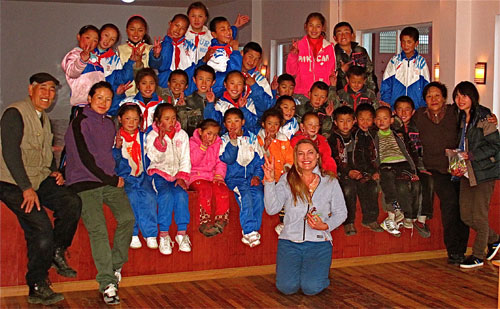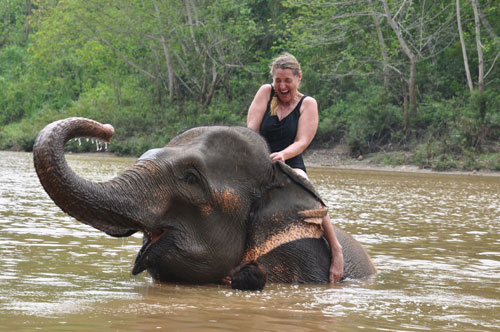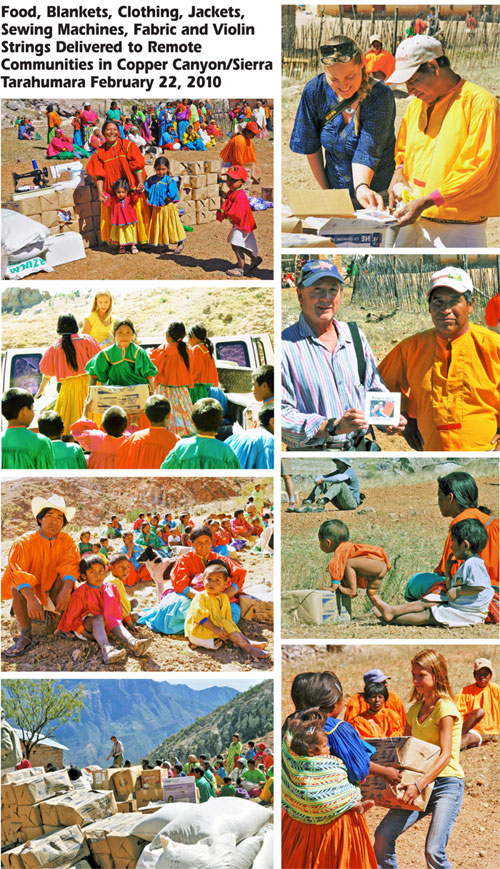The rim country of the Red River Canyon Yunnan China, Yuanyang reflective terrace fields.
Up from the fantastic Hani Rice Terraces, in the mountains above Yuanyang, the water flowing down to irrigate the fields looks crystal clear, and the air is incredible clean, strolling on the stairway to heaven, you can drink in to your heart’s content the full beauty of this natural scenery!
Yuanyang County was once crowned as one of the China’s 17 most attractive scenic places. 326 km south of Kunming, the capital of Yunnan Province. Although few general tourists have visited the YuanYang rice terraces, many photographers have because of the reflective beauty of the landscape.
The amazing rice-terraces built on the red-soil mountains. 2500 years ago, the ancestors of Hani people came from Tibetan Plateau to this land and worked out the terraced fields on mountains generations after generations. The rice farmers have had to practice those concepts centuries before they were widely accepted around the world. Without hard work maintaining the terrace walls and irrigation system, the precious top soil would wash down the hillsides into the rivers.
Natural rural life ways in the canyonlands of eastern Yunnan during harvest season.
Four ethnic groups the Yi, Buyi, Miao and Han dominate the landscapes
of eastern Yunnan canyonlands. Weddings as well as childhood and old
age blend so naturally that all life ways from highly urbanized to very
rural blend very
seamlessly day to day throughout the region.
DongChuan/Red Earth Terraces
In contrast to their gigantic sister canyons of western Yunnan, the earths largest and deepest, the canyons of eastern Yunnan would be considered mid-sized by world standard measurements yet very colorful and diverse.
In northeast the soil is made up of Iron Oxide red earth and the southeast Karst (limestone) geology of a chalky nature dominates the canyons.
Both regions see very few foreign visitors but they are well developed for national tourist with average to excellent tourism services.
I was personally interested in photographing the DongChuan/Red Earth terraces but found it was very difficult to find information. Most web pages led me to believe it was like visiting a very strange and remote region of another dimension. While being very descriptive of the land itself the trip was actually quite easy. Just 3 or so hours drive (180km) north of Kunming on a new freeway and later state level paved road I came to “new town” DongChuan which has almost a dozen 2-4 star hotels and many eating and modern shopping establishments as well.
Above and directly west of “new town” a narrow paved road winds its way upwards about 3,000 feet through a small side canyon to the rim of the YiLi River Canyon a tributary of the mighty Yangtze River just down stream of Tiger Leaping Gorge. As I had the misfortune of leaving Kunming at noon on the first day of Chinese “Golden Week” mass travel, I only arrived to the overlook of the terraces just an hour or so before sunset. None the less the area was so spectacular that I was able to obtain these “representative” photographs of the area in just a half hour or so. After so much investment in my efforts to reach the region I was very pleased with the out come for the photography considering the short time available to explore the area.
Dongchuan is a rural place in the Wumeng Mountainous area. The brilliant red soil, the yellow and white buckwheat flowers and the dramatic skies make the region around Dongchuan a paradise for photographers.
Dongchuan Red Land represents Yunnans mountain and canyon most attractive colors. It is decorated with multi-color crops. Fiery red soil, emerald green barley, golden yellow buckwheat and snow white oil flowers against the floating clouds, ever-changing light and the dramatically blue sky make a marvelous painting, bringing not only the strong visual impact but also an experience in natural rural life ways of a by-gone era.
While I did see 2 or 3 hotels that may have been completed up on the mesa, I did not have the opportunity to investigate the quality or cost of the accommodations and food services. I was very please to see that DongChuan is, so far, not “over developed”as are many areas are in the most remote regions of China. There were a moderate number of travelers in private cars from Chongqing and Kunming and no tour buses that I saw. Considering it was “Golden Week” one of the 3 most heavily traveled weeks in China it was very pleasant to see a few families out enjoying the fresh mountain air and benefits of being in a natural rural environment.
September – November is the best time to visit. The crops in this season get ripe and present gorgeous colors. The Dongchuan Red Land is basically an all-year-round destination. In spring it is the ocean of flower; in summer it is the wave of cornfield, in autumn it is the fairyland on earth.
Canyons by .
The Tara River Canyon/Gorge is one of Europe’s three deepest
competing with the Vicos Gorge of Greece and the Verdon Gorge of
France. All are so close in depth that it would be scientifically
impossible be certain which is absolutely the deepest. That being a
geographical fact, nationalistic claims can continue unabated,
perhaps forever. One common claim that is absolutely false is that is
the earths 2nd deepest after the Grand Canyon
of the Colorado in Arizona, USA. What is factual is that all of the
earths deepest canyons/gorges cut into the rim of the Tibetan
Plateau where ever a large river crosses the edge of the plateau as even
the most elementary study of world geography would quickly reveal.
The Tara river canyon does have two very important items to speak for it as one of the earths preeminent chasms. The first is that it is one of the most beautiful canyons on the globe and the other is that as a practical matter it is the only 1 of Europe’s 3 deepest that is raft-able. As such, it is one of the worlds “must do” in the world of rafting. It is a photographers dreamland as well as a wonderful family adventure outing.
Our canyon research non-profit Wilderness Expeditions Ltd. of Tucson AZ. USA has been investigating the gorge for almost 2 decades. We have hiked it, done flyovers but for the first time in July 2010, we at last had the opportunity to raft it thanks to the sponsorship of Maria Gates of the Gates Group.
Our starting point was Sarajevo and from there a bus ride south (about 100km) to Foca on the border of Bosnia and Herzegovina. There we booked with a fabulous guide outfit called HIGHLANDER that is headquartered in Foco. The next morning we set out at 5:30 am on our fantastic adventure!
After an hours drive we came across this amazing site of the Piva Canyon. Ms. Gates took this amazing photo.
After launching on the Tara River proper after lunch we came across a family group from the mid-west USA on a two day adventure trip down the emerald blue river.
The next morning we entered into the narrowest part of the canyon and photographed this wonderful spring gushing after an hours drive we came across this amazing site of the Piva Canyon. Ms. Gates took this amazing photo.
From the east wall (river right) from a cave hidden behind a lush screen of forest.
Bucevica cave falls river right.
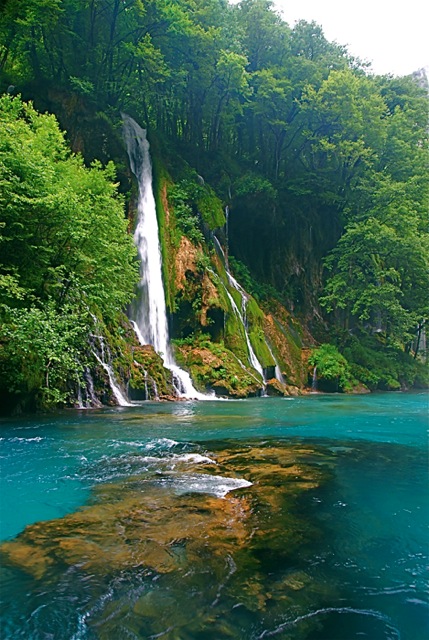
“The Tara River Canyon (Montenegrin: Kanjon Tara),
also known as the Tara River Gorge, is the longest canyon in Montenegro.
It is 82 kilometers long and is 1,300 meters at its deepest, making it
the deepest river canyon in Europe. The canyon is protected as a part of
Tara national park and is a tentative UNESCO World Heritage Site. The
Tara River cuts through the canyon.
All along its flow, Tara gets large quantities of water from numerous sources, and quite a few tributaries. The most important tributaries on the left Tara side are Ljutica and Susica, and the most important tributaries from the right side being Vaskovaska rijeka and Draga. The most important source is the source Bajlovica sige, a source placed on the left bank of the Tara river giving to the Tara a few hundred liters per second, where the water sourcing from the Bucevica cave falls into the Tara more than thirty meters high, and more than a hundred and fifty meters bright. Very special are the Tara cascades. The roar from the cascades is heard on the very peaks of the canyon. There are more than forty cascades, the most famous being: Djavolje lazi, Sokolovina, Bijeli kamen, Gornji tepacki buk, Donji tepacki buk etc. Because of the quality of its water, and because of its unique ecological system, Tara in 1977 was put into the programme “Covjek i biosfera” (Men and Biosphere) and inscribed into the ecological biosphere reservations of the World, being thus protected under an internationally issued convention.
There are rocky and pebbly terraces, sandy beaches, high cliffs, and more than 80 large caves along the canyon.” – From: Wikipedia
Recommend:
HIGHLANDER – GORŠTAK
Tel: +387(0)58/213-225
Mob: +387(0)65/475-201
Adresa: Mojkovačka bb
73300 Foča, BiH
Email: highlandertim@hotmail.com
Website: www.highlandertim.com
Grand Falls of the Una River Gorge- Biha’c Bosnia and Herzegovina
Falls Jumping….or
Falls Rafting? For ourselves we just took the photo’s.
Recommend:
UNA RC-Kiro Rafting
Coralic MersadKiro, Prof.
Website: www.extreme@una-kiro-rafting.com
Email: extreme@una-kiro-rafting.com
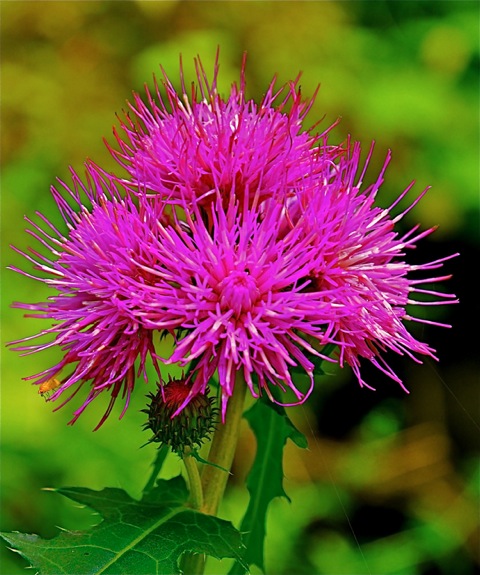
Maria Gates-Nature and Adventure Photographer
Canyons by .
Sep 10
28
Jade Dragon Stone River Canyon
A lovely covey of ducks glide on Karakul Lake into the mirror image of Muztagh Ata peaks ice fields.
“Muztagh Ata lies just south of Kongur Tagh, the highest peak of the Kunlun Shan. Together they form a somewhat isolated group, separated from the main chain of the Kunlun, and also separate from the Pamir Mountains to the west. (Both peaks are sometimes regarded as being in the “Chinese Pamir”, and are more closely connected to the main Pamir group than the main Kunlun group.) Not far to the north and east of this group are the lowlands of the Tarim Basin and the Taklamakan Desert. The Karakoram Highway passes very close to both peaks as well as Karakul Lake, from which the mountain is conveniently viewed. The closest city is to the mountain is Tashkurgan, the westernmost town in China and very close to the border with Pakistan.” – From Wikipedia.
Since our first expedition in September 1998 the Grand Canyons of the Kunlun Mountains have been an ongoing fascination for our canyon exploration efforts. Here are located 2 of the earths deepest canyons that still defy exploration.
There has been a long debate as to the correct placement and name of the Kara Kash River as well as the meaning of the name. There is a debate, as the two rivers that feed into the Hotan area and Takalamakan desert, are often miss labeled by the maps and do not agree with the names given by the local people.
We now know for certain form interviewing numerous local people that the historically important Jade river is the eastern most of the two and is called Yu Long Kashi/Jade Dragon River. We were able to see that the lower canyon actually resembles a dragon as it has massive plates of slab stone hundreds of feet in height both at river level and along some of the ridge lines. The resemblance to an actual mythical dragon is uncanny.
The western river is named the Kara Kashi River (perhaps “white jade” river) which is now aimed to provide a powerful electrical generating plant and a large irrigation system which is used to water the extensive Uygar peoples agricultural farms of grapes, walnuts and corn among other corps. They also raise large flocks of goats, sheep, cattle, yaks, camels, as well as typical cattle with this rich abundance of water along the southern edge of one of the driest deserts on earth, the Taklamakan.
In another interesting factoid none of the local people know for certain the meaning of Yu Long Kashi and Kara Kash River names. But during intensive interviews they surmised they mean Jade Dragon Stone, Black Jade (the eastern twin river) and White Jade Rivers (the western twin river).
About 1980 km southwest of Urumqi by road, Hotan is one of the most isolated parts in Xinjiang, sitting at the southern boundary of the Taklamakan Desert. It is connected only to Kashgar and, via the new Desert Highway, to Korla. Brought to life by the Karakash (Black Jade) and Yorungkash (White Jade) Rivers, this town has long been a spiritual and commercial center on the Southern Silk Road. Ancient city ruins and Buddhist temples are in this region.
Hotan River Canyons and Jade: Some of the highest quality jade in China—most notably the whitish mutton fat jade—comes from an area along the banks of the Yulong Kashgar River near Hotan. Two-thousand-year-old historical records refer to a Jade Road from the area.
In imperial times, Hotan jades were sent as tributes to Chinese emperors and carved into exquisite works of art and made into chops used to seal official documents. The price of Hotan nephrite soared in the mid-2000s, quadrupling in value in 2007 alone to 10,000 yuan ($1,347) a gram for the best-quality stone, or 40 times the value of gold. One piece of Hotan mutton fat jade weighed 11,795 pounds was carved into an image of an ancient emperor leading flood control efforts. It now resides in the Forbidden City.
Today Hotan jade accounts for about 10 percent of the annual $1.2 billion jade trade in China. Much of it is mined by small-time prospectors with sieves who hope for a big strike but get by mostly with relatively small pieces of white, green and brown jade that they can sell for a few cents a day,
Nephrite found in western China has traditionally been collected by “jade pickers” who wander the shores of dry river beds picking up stones washed down from the nearby Jade Mountains during the spring floods.
Canyons by .
Muztagata Peak (7546 meters) along the Indian/Pakistan southern branch of the ancient silk road. Now a major paved highway for trade from modern China to Pakistan. This landmark uniquely rounded land mark covered with a thick covering of glaciers now has some “nomad tents” set up to accommodate overnight tourist.
When we arrived we were greeted with a crystal clear view of the famous landmark but soon after a Taklamakan infamous dust storm soon obliterated the view. Still a wonderful worthwhile sight. It was the only “faraway” sight we saw the rest of the expedition.
“Golden Eyes” of the Uygar minority group.
Some of the local Uygar people are beginning to adopt more conservative customs of dress…but from my observation the brightness and color of even the most conservative costumes were even more eye catching.
Typical street scene on market day. Hansom and rugged Turkish men and the lovely flowers of ethnic ladies dresses.
Uyger children show the true beauty of the people of the region.
Uyger child washing up after cleaning the walnuts of their casing during autumn walnut harvest. The joys of childhood and youth in full bloom.
Peaceful village lane beauties along the ancient Silk Road near the seldom visited town of Hotan.
The ancient and modern Silk Road still offers “hard seat” services on trains, ox carts, horses and bicycles, it seems, as well.
Canyon researcher and tour adviser Richard D. Fisher meets and befriends directors of museums and local tourist services along the south branch of the seldom visited Southern Branch of the Silk Road.
At long last a view of some of the canyonlands along the Silk Road. There is still a great deal of research to be done here in this region on canyons. Information about canyons, as is typical, was totally lacking about the canyonlands and many other details before our September 2010 expedition. We now have a very good idea about the locations of the canyonlands including the “Grand Canyon” of the Silk Road as well as the locations of the museums, cultural and archaeological sites. This place was named “Colorful City” ???
Silk Road canyonlands beauties Maria Gates, expedition sponsor and personal supervisor, with her traditional “Chinese Beauty” model, Karen, and her friend and our excellent interpreter Monica. “What a wonderful afternoon to enjoy the great beauty of nature with ladies of equal attractiveness”…commented expedition photographer Richard D. Fisher. Or perhaps as they say “life is hard but some one has to live it”… to the fullest.
While photography is strictly prohibited in the museums as is typical
in all the world we were able to obtain permission to use some
representations for our web page to promote tourism. We were also able
to establish trust and friendships where photography policies
may be more liberal in future trips to the region. We certainly
established the knowledge and friendships necessary to further develop
and enjoy future and more valuable information on this fascinating
region and it’s geographical, cultural and archaeological treasures.
The “Grand Canyon of the Silk Road” is still out there and we now know where it is….
The photographers self-portrait silhouette.
Canyons by .
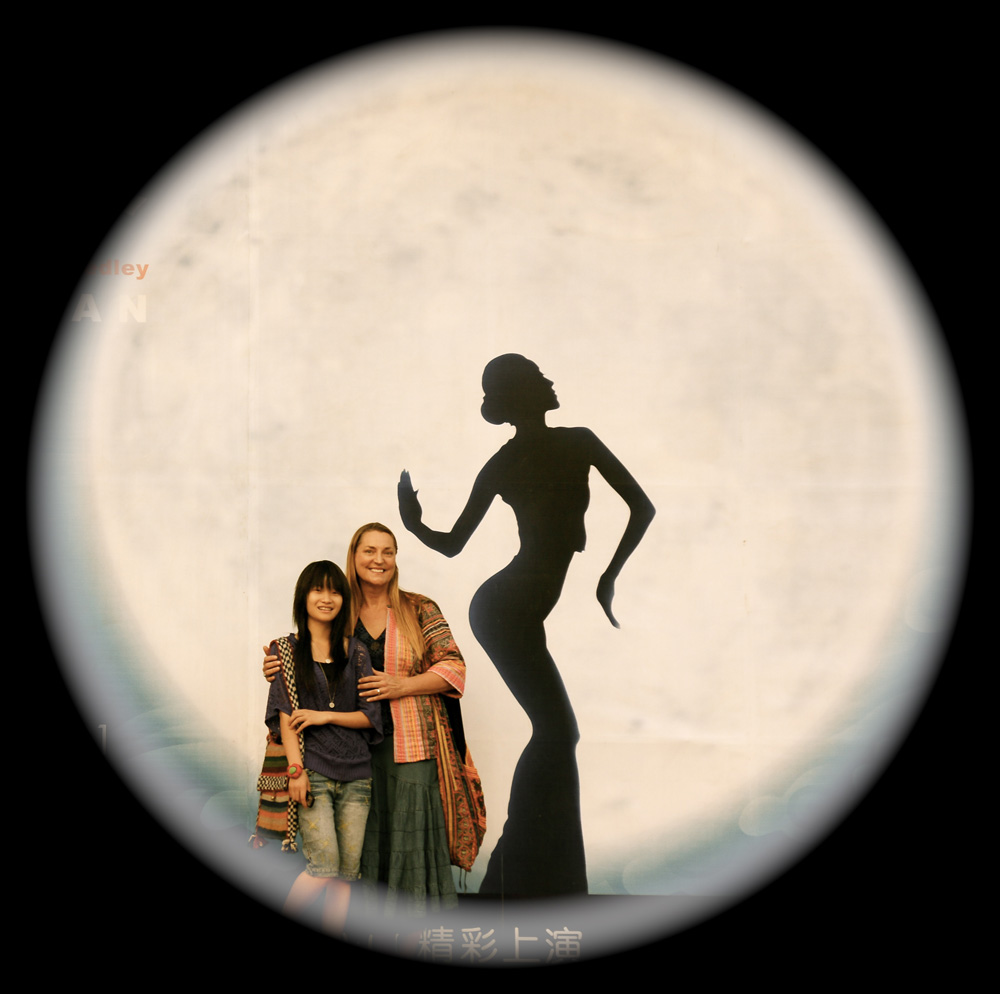
China’s most famous ethnic dancer, Yang Li Ping, has invited the dancing orphans
to participate in her award winning dancing program “Dynamic Yunnan” this summer 2010.
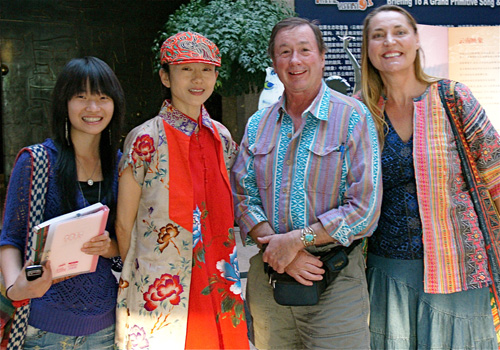
Left to right: XJ Fan, Yang Li Ping, Richard D. Fisher and Maria Gates
Orphan Aid by .
May 10
13
Tibetan Orphan Aid
High Tibetan Plateau Orphan to Shangri-la Orphanage
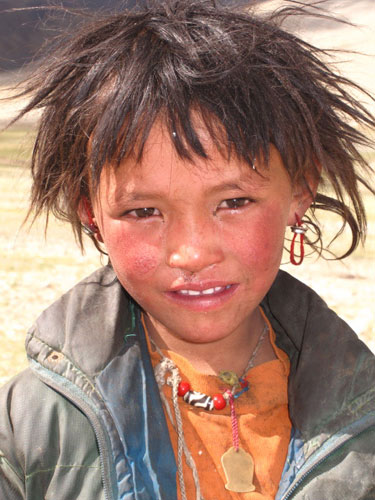
In 1990, I went back to Tibet for the first time since my childhood.
Usually people who travel to this country are interested in religion or
landscapes or visiting their relatives. When I arrived, all I could see
were the orphans and the street children. I was so moved by these
children that I decided to do something for them. There are orphans all
over the world, but I am myself a Tibetan orphan from the 1950′s and so
I wanted to help the orphans in Tibet today.
Thanks to all the help and support we have receive and are receiving from family, friends and visitors from allover the world, we have been able to raise enough money, to sustainably enlargen the Orphanage Project, take care of more children and even realise some additional project ideas like our dance program.
Orphan to Tendol’s Children Orphanage
During our recent explorations of the Tibetan Grand Canyons, we
discovered an amazing group of talented dancing orphans that we were
inspired to sponsor. They shared with us their enthusiasm and encouraged
us with their joy of life and spirit. Through their Tibetan Dancing
they are not only keeping the beautiful culture of their heritage alive,
they are also sharing with us that life is so full of opportunities
and hope .
Contact us to sponsor these Tibetan Orphans! Click here.
For the full story please click here.
Orphan Aid by .
May 10
10
Nam Ou: Grand Canyon of Laos
A friend emailed us this message:
“Great to hear that you are putting Laotian Canyons on the world map and introducing new words to Sanskrit dictionaries in South east Asia.”
“It would be a bit presumptuous for us to put any new words in the Sanskrit dictionary, but we were told by local authorities there was no word for canyon in the Laotian dictionary. What I have found world wide over the past 25 years is that there is often not any geographical distinction between Canyon and Mountain topography. In this, new discoveries and new concepts can emerge. Can anyone advise us of a word in the Laotian or Sanskrit languages for canyon?” Richard D. Fisher May 5, 2010
“Journey to a Paradise Found”
Whomever wants to feel the enchantment of a
small paradise called Muang Ngoi Neua has to go there by river. No road
ever carried any friend, foe or foreigner to the little village on the
Nam Ou River in the North of Laos.
Just board in Nong Khiaw and the journey begins.
A Sea of Green.
Countryside of dreams.
Eco and Cultural tourism at it’s best.
Family Tropical lifestyles.
Childhood pleasures.
Karst topography of the Nam Ou River Canyon.
Even Lao water buffalo have itchy noses and find a way to scratch them and brown nosing is a worldwide tradition?
After leaving the high-season hustles of touristy Luang Prabang, the experience of floating along the river towards Muang Ngoi in a long pointed motor barge may be like a catharsis. Observing children playing jolly games at the banks, buffalos protruding their heads out of the water, while sensing the fresh winds and the pounding of the waves might inspire contemplation, an exercise of calmness, or even meditation.
Or, as in our case, the little boat might get so stuffed with young sun-tanned adventurers that it seesaws like being on the brink of capsizing.
You might have to persevere on hard, hurting wooden banks for one long hour, crammed together like sardines in a can. The dressy Italians in front of you might twist their mouths askew as you touch them with your legs accidentally, due to shortage of space.
Though, as the boat lands in Muang Ngoi, the squeeze is quickly forgotten. The green of the giant karst mountains fills up our thirsty senses. Palm trees caress the simple dirt road, the river winds through the valley in beautiful loops, pleasing the eyes. Tranquility immediately saturates the visitor’s mind.
For centuries, life in Muang Ngoi had been only affected by the gentle pace of the river. Fishing for dinner, panning river stones hoping for gold, spending hard days on the paddy rice field were activities which had given life its daily frame, its traditional routine.
Still in the afternoon, people take their daily refreshing bath in the river after finishing work here. Still, every evening, they observe the shadow of the mountains languorously bowing over their scattered huts and homes.
With one tiny difference: Muang Ngoi today is a prime example for the development of positive tourism in rural regions in Laos.
It had all began about ten years ago. Besides flotsam and jetsam, stones and fishes, the river one day also carried the first strangers ashore. Pale, mammoth foreigners with huge Jack-Wolfskin backpacks and soul stealing Olympus cameras stranded at the shallow banks of the Nam Ou in search of their personal paradise.
The first encounters with the visitors must have been strange. Different worlds may have collided, paradigms may have clashed. “Is this going to work out?” the village elder may have asked himself.
After some years, people got used to it. Restaurants and Guesthouses nowadays decorate the little road like colorful oddities and have become the inhabitant’s main source of income.
Quietly and constantly, tourism has brought Muang Ngoi income over the years.
Once being an adventurous insider tip, this sleepy patch of earth has finally developed into a relaxing waypoint at the Lao banana-pancake-trail.
Even so it is remarkable how the tourist growth seems to nestle into the peacefulness of the village, how harmoniously the pancake smell contrasts the fragrances of coriander and sticky rice.
A misty day, the mountains loom in a distance, covered with green velvet.
Clouds gather at the blue grey sky, subtly threatening.
It is in the air: The rainy season, insistently adjured by the Lao with New Year water ceremonies and rocket festivals beforehand, is about to return.
The mountains will be washed clean and will be given their lushness back. The grey and blue Nam Ou will be churned up and will rediscover a healthy reddish earth brown, ending as well the touristy high season.
In Khamla’s restaurant, mother, grandmother and daughter are sitting already well sheltered under a bamboo roof, peeling carrots, waiting for the rain. “With the time we found out more and more what foreigners like to eat”, says the mother, pointing proudly at the English menu. “Now we can make a living on running this restaurant.”
In the shelf, unchilled chocolate bars melt in their plastic wrappings. The village does not have electricity yet. A whiteboard advertises “Muesli with Fruits and Yoghurt”. They have learned all these tricks from Luang Prabang, have imported all these products from Vientiane.
In the night, the first thunderstorm of the year devours Muang Ngoi. I go outside, disturbed in my dreams, and the brutal beauty of the storm hits me like a slap in my face. Lightening perfuses the sky like white spectral veins. For instances, it creates negative images of the karst landscape. The central mountain looks even more stunning for the blink of an eye – a monstrous black outline cut into a white rainy sky.
The rainy season just arrived. Now the stream of visitors will be cut off a bit. The original village life will recapture Muang Ngoi now.
In Muang Ngoi, which never had any road access, there is one single car now. Some months ago someone had firmly claimed that a car would be somehow useful to cultivate the village’s rice fields. So they got a pickup from Luang Prabang. One man was on the wheel, thirty on the back, bushwhacking all the way to Muang Ngoi through the jungle with machetes for hours and hours.
The first rain just fell, and now that the rice planting period is about to come, the villagers of Muang Ngoi will try out their new four-wheeled trophy of modern spirit to plant their traditional source of living. It is just one of the fruits of an ambivalent miracle named tourism in Laos.
We bid a half million “kip” ( 60 USD) for this prime riverside property, and are still waiting to see if our offer is accepted.
The lineup of the usual, beautiful, eco tourism suspects crammed like sardines in a can, we motor up the river in our long pointed narrow wooden barge bobbing back and forth.
Slash and burn agriculture dominates the local tropical rainforest, the house used
to guard the maturing crops from raiding wild life is newly constructed..
Canyon beauty of the Nam Ou River Gorge..
The “Huck Finn” family of the Nam Ou River playing in the tropical aquatic paradise.
This girl’s smile reflects her inner spiritual happiness and not the dangerous and difficult job of panning for Gold in the middle of the river.
The “Grand Canyon” of Laos, as a new discovery of canyon topography.
You will notice the brilliant red-stained teeth and lips of the local women. Betel nut is the cause. Green betel nut is a nut that grows in the tropical climates of South East Asia and is popular in the South Pacific Islands. It is chewed as part of social occasions or as a part of everyday life. Betel nut has a mild stimulant effect and in addition to reasons of tradition local people chew it for stress reduction, heightened awareness, and suppression of hunger.
Akha in Northern Laos
The Akha in Laos are concentrated in the higher areas of the high plateau of Phongsaly (close to the Black River and Vietnam) and Luang Namtha Province (bordering Sipsongpanna, Burma, and the Mekong River) interspersed with Mien, Hmong, Khmu, Htin, Lisu, and Lahu. Some were displaced during the Vietnam war, in which they were involved in fighting the Americans or the CIA Hmong groups led by Vang Pao, and in conflicts between the Pathet Lao groups (Dassé, 1976; Cooper and Tapp, 1991). People calling themselves Akha in Laos are called, in Lao, I-ko or Kha Ko. Other names given by outsiders include: Puli, Pussang, Oepa, Oema, and Kopien. The number of Akha in Laos can be estimated conservatively to be between 92,000-100,000, but might well be higher (Lao UNESCO Committee, 1996; Duy Thieu, 1996).
Akha women wear the wealth of their families as coins on their colorful daily dress. Akha also have no written language and make up for it with very animated verbal communication.
The Akha
In the last 200 years the Kor or Iko (preferably called the Akha) have relocated to Laos , China , Vietnam , Thailand and Burma . They came from Kuaichao and Yunnan (modern day China ) to escape war and to cultivate the land. This traditional hill tribe has a population of just over 90,000 in Laos alone; they count over 15 different sub groups. The Akha have no written language, therefore communication becomes highly important. Akha men can usually recite their genealogies 60 generations back! This ability is what has helped link clans together over five nations.
The Akha usually live in remote valleys near mountain tops, 1000 meters above sea level and higher.
They mainly grow rice, maize and cotton. Some sub groups are known to
grow indigo, vegetables, peanuts, sesame, and soybean. During the month
of December the new cotton is spun into thread for the women to make
crafts. Jewellery for the traditional headdresses, clothing, and
neck-rings are (or rather used to be) made by the Akha men.
Unfortunately traditional handicraft-making is steadily decreasing, as
particularly Akha women have to work extremely hard and long hours which
lets them prefer to buy cheap imports (plastic and aluminium goods)
rather than making handicrafts by themselves. Increasingly,
handicraft-making is seen as a necessity for poor families (the vast
majority of Akha are extremely poor) who cannot afford to buy the
imports.
As the menu shows, the Muang Ngoi people have learned that the tourists enjoy free range meats.
The Nam Ou meets the mighty Mekong at the ancient capital and modern tourism center of Luang Prabang.
On the Nam Khan River, the elephant Keo enjoys her daily swim with her girlfriend, Maria and her care taker, Chanty.
Photography by Maria Gates & Richard D. Fisher
Canyons by .
Apr 10
20
Tarahumara food delivery Spring 2010
Canyons by .


